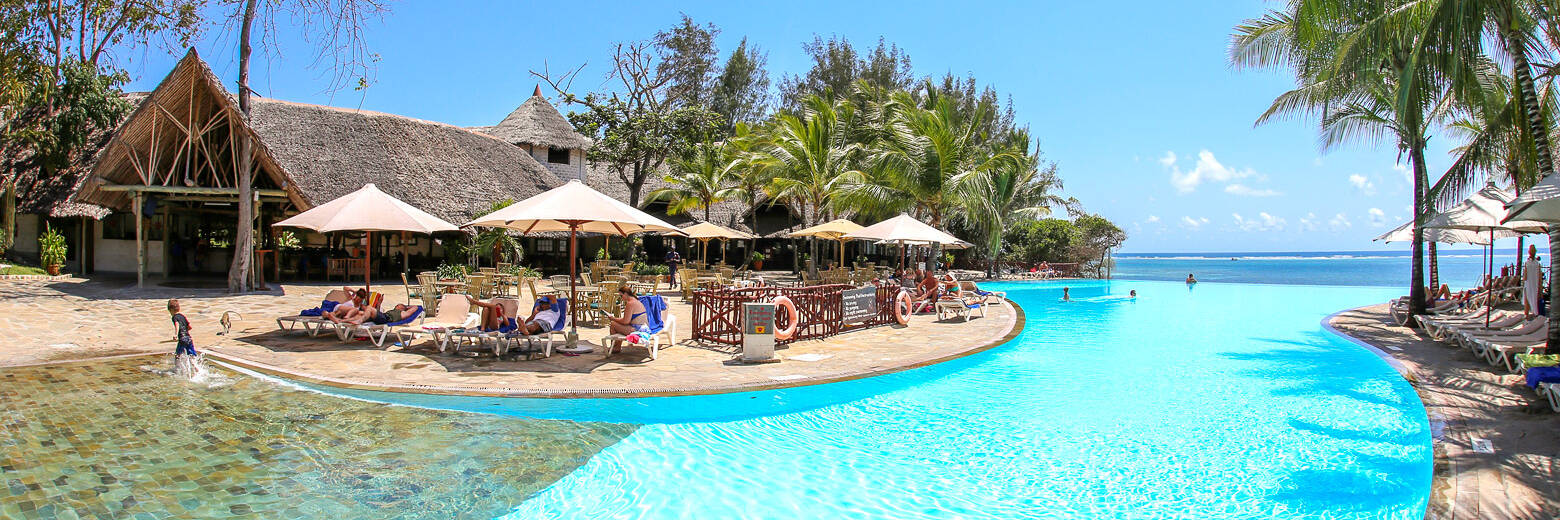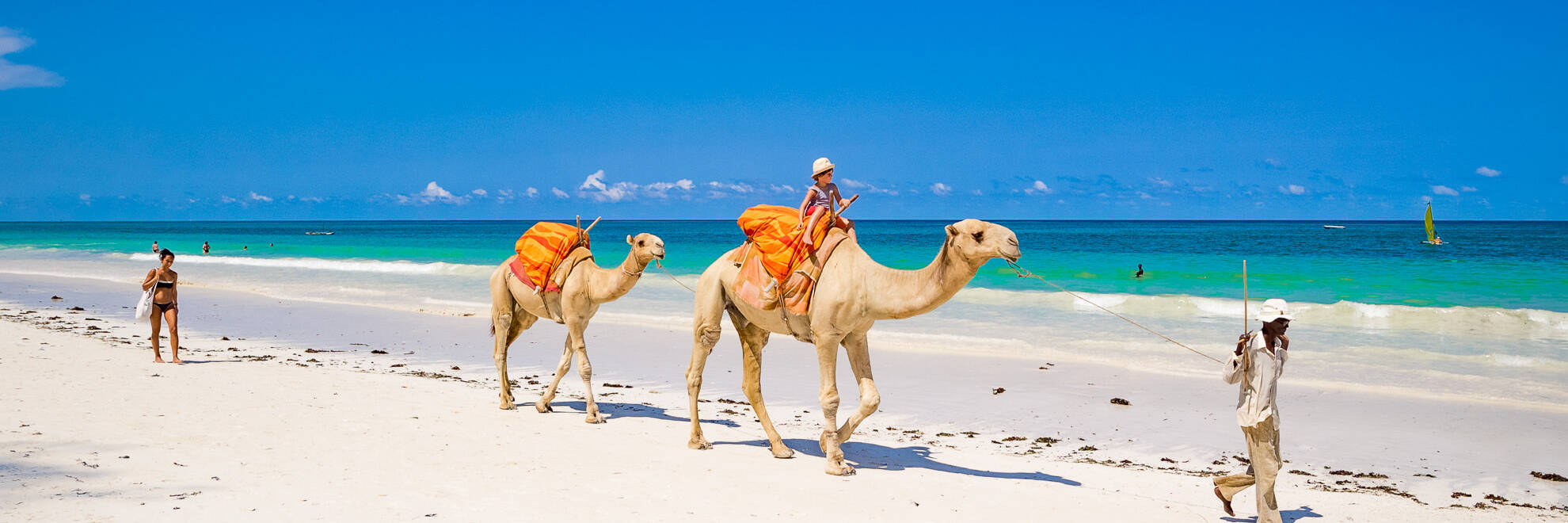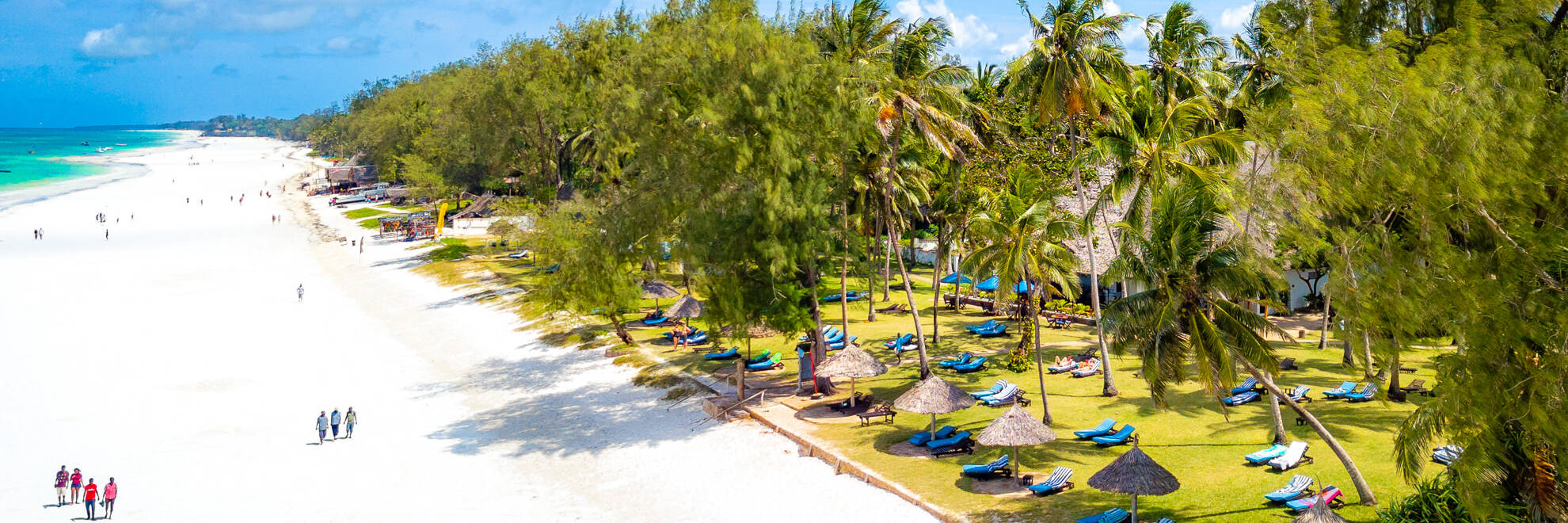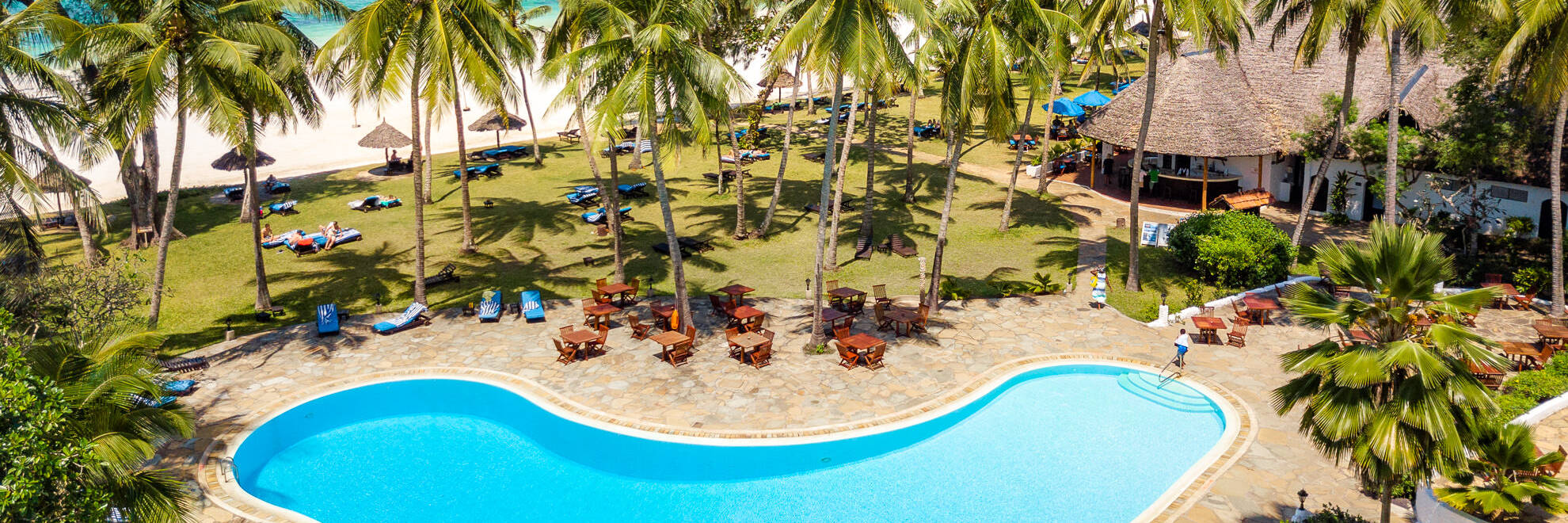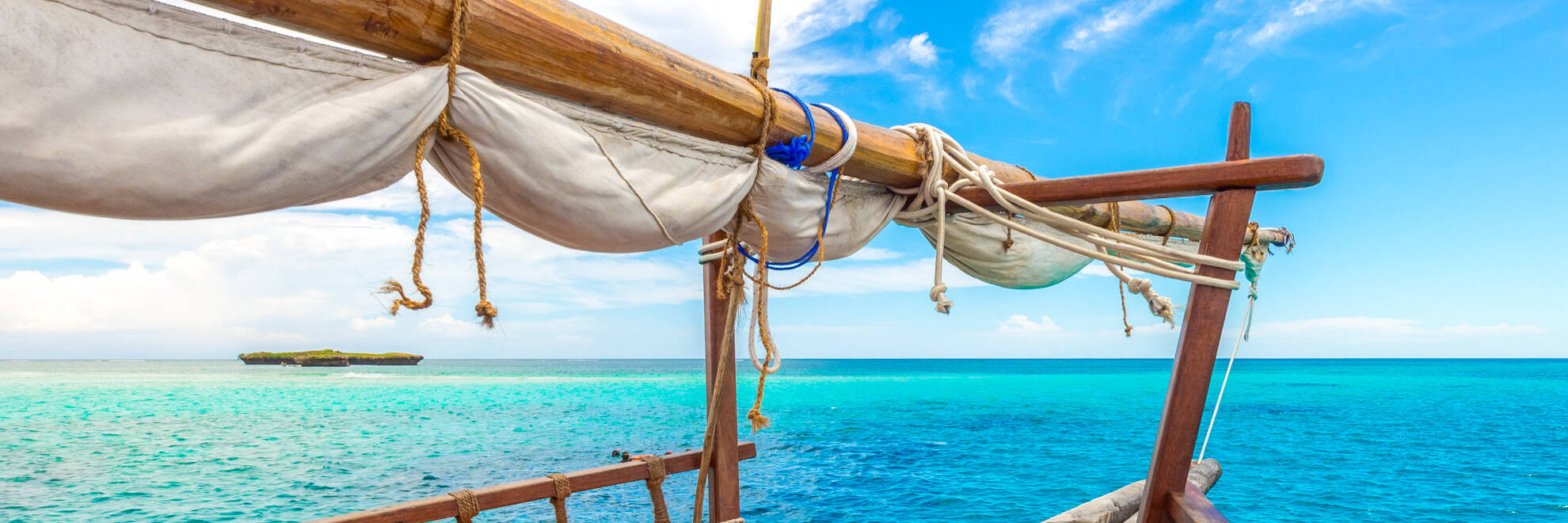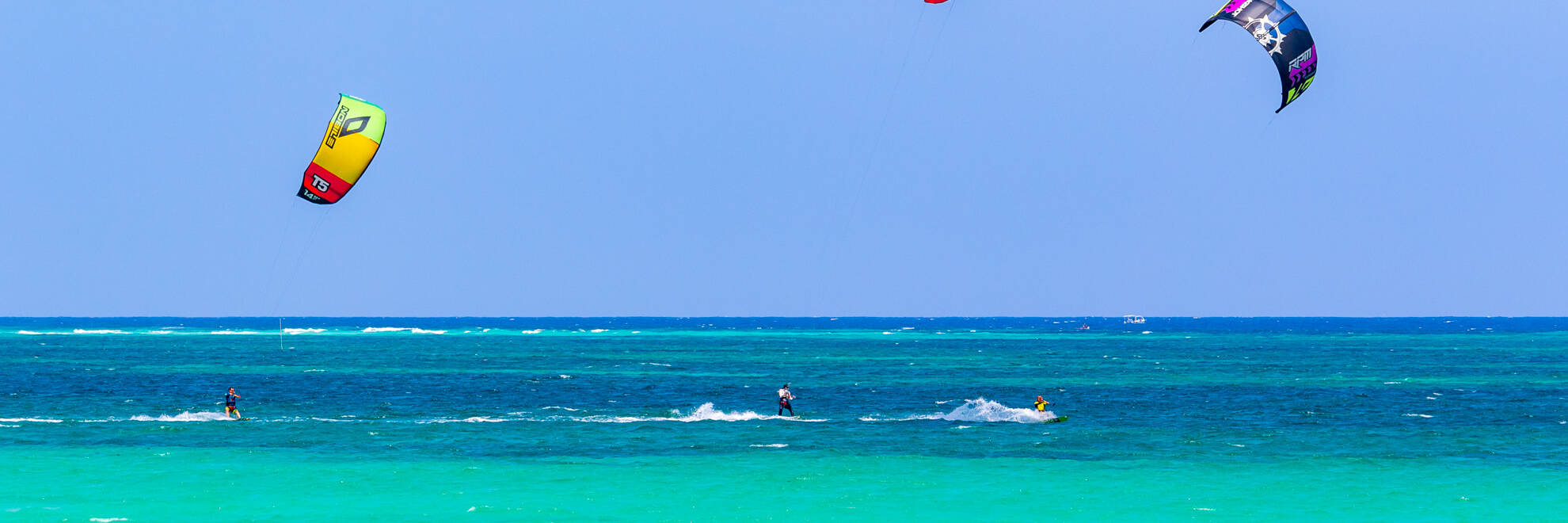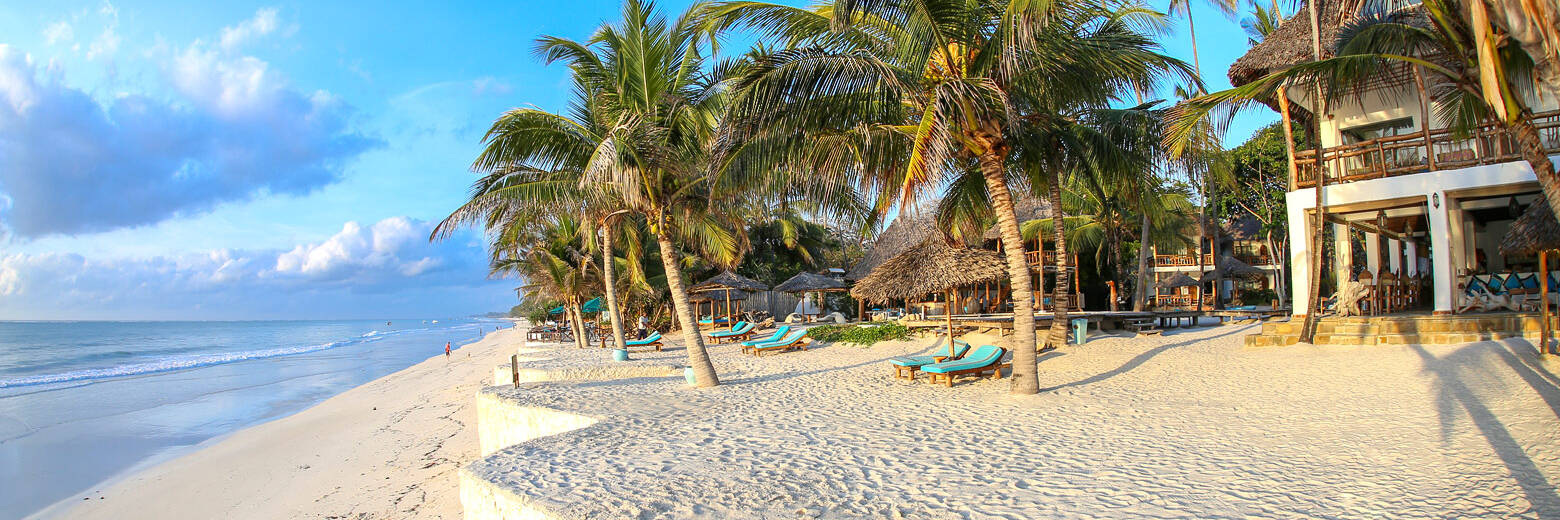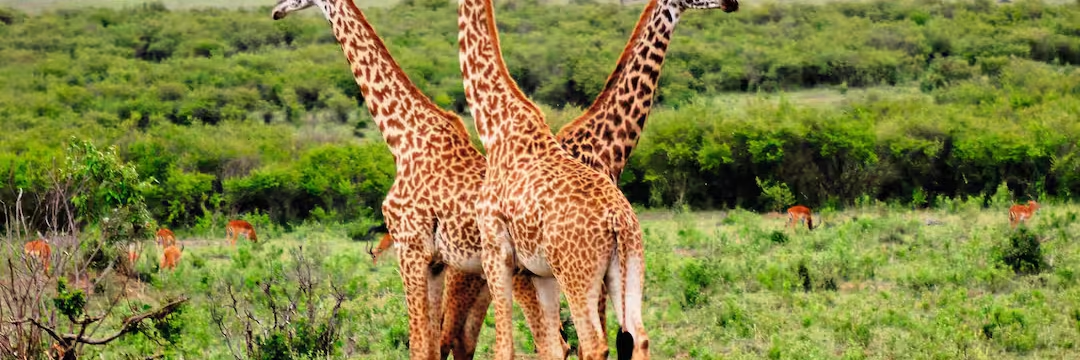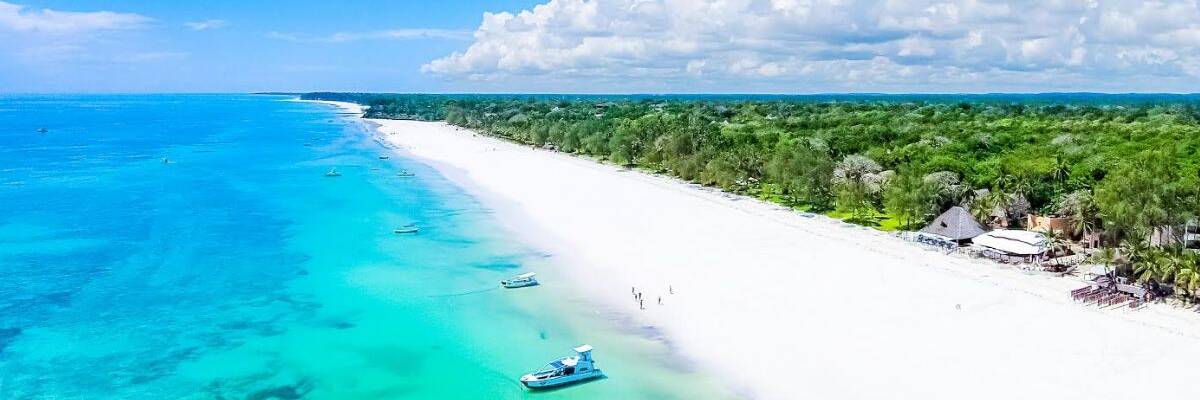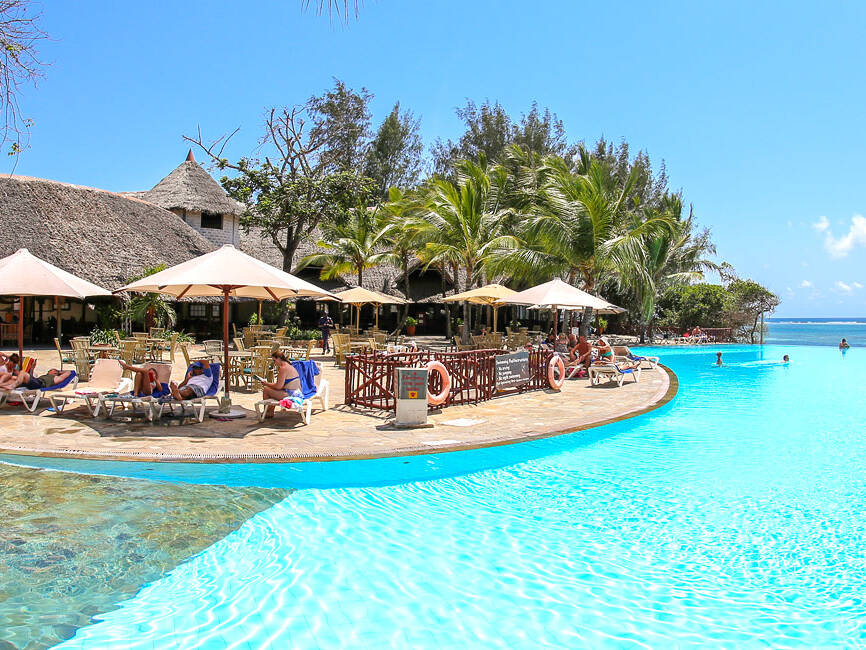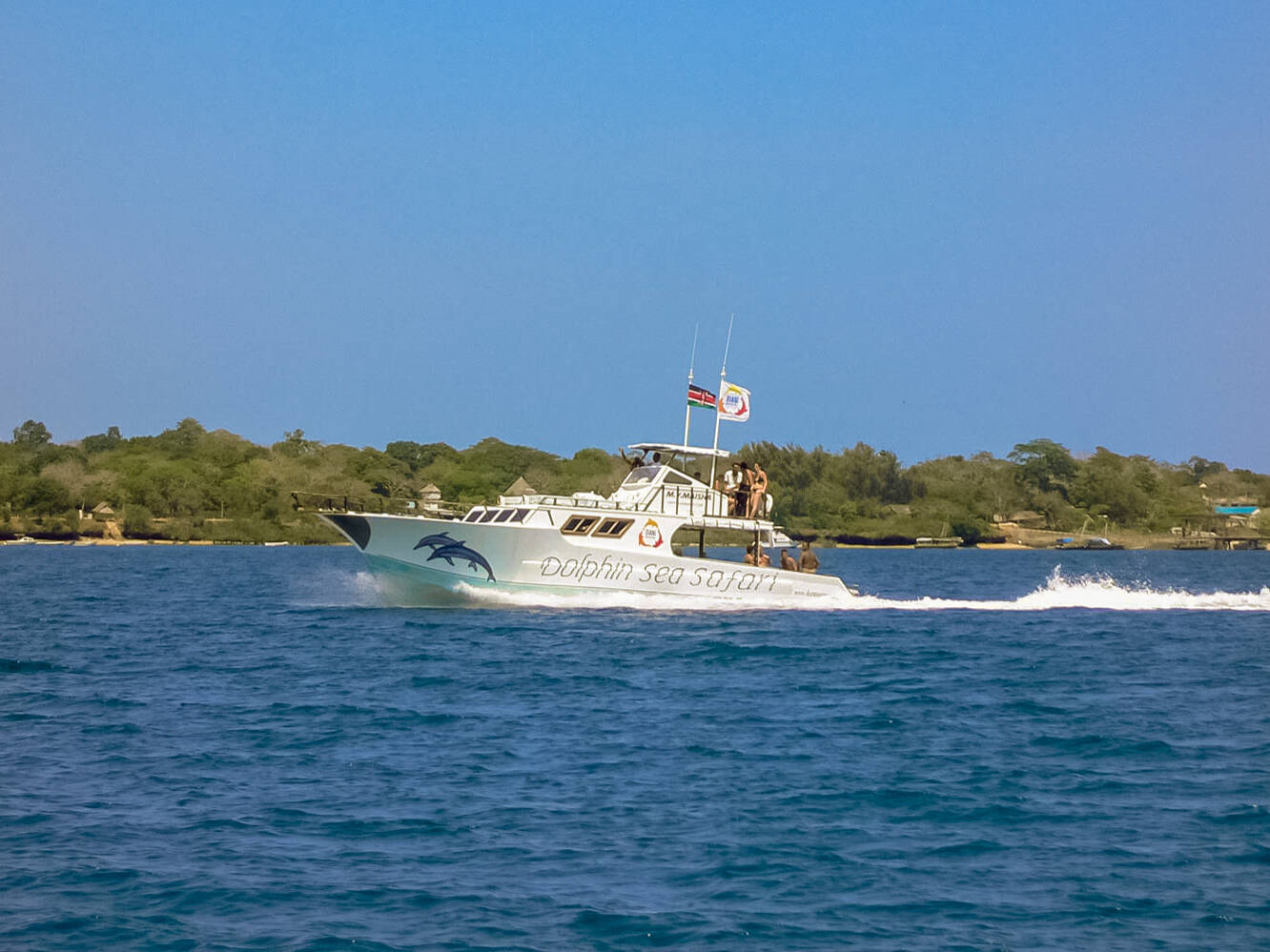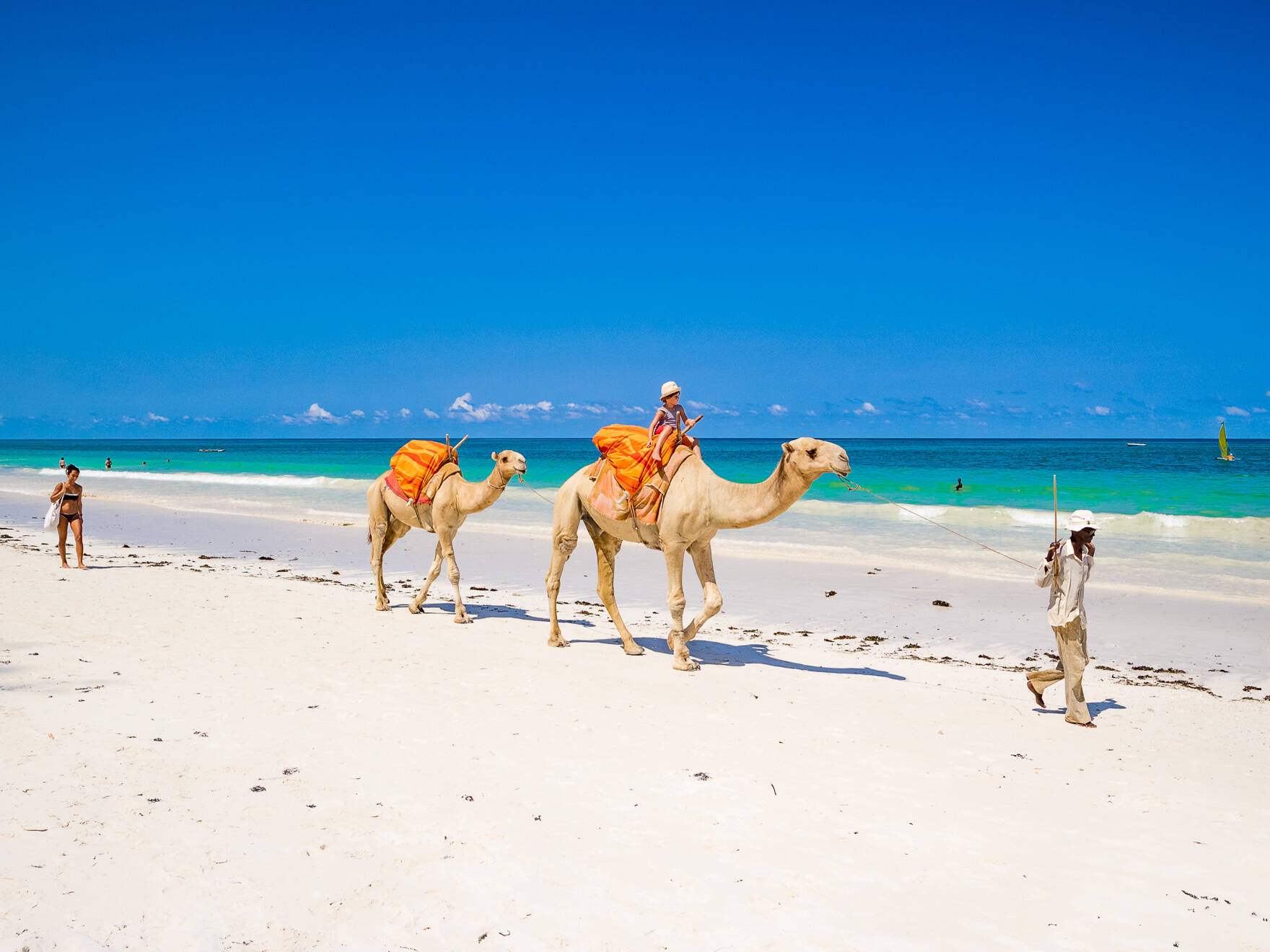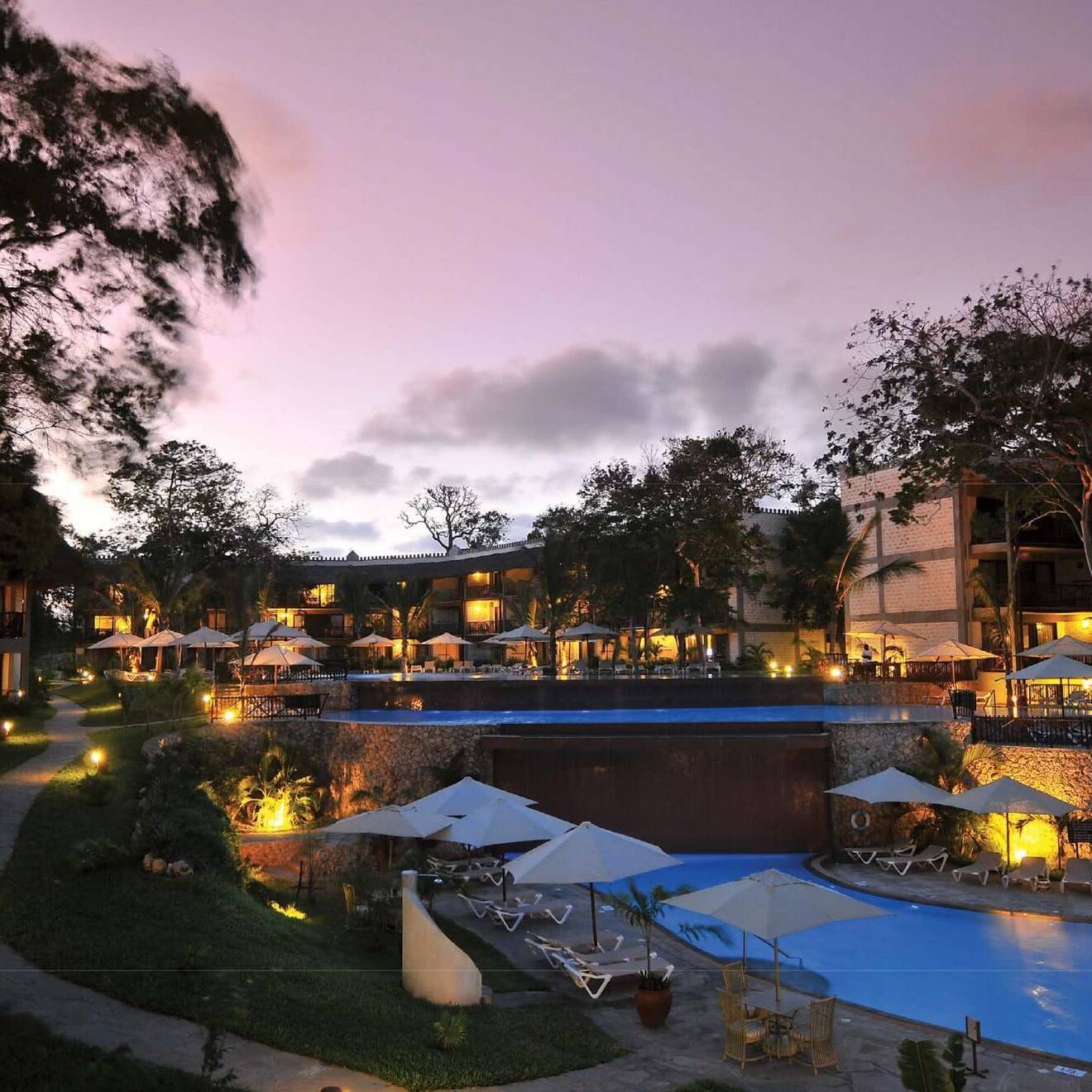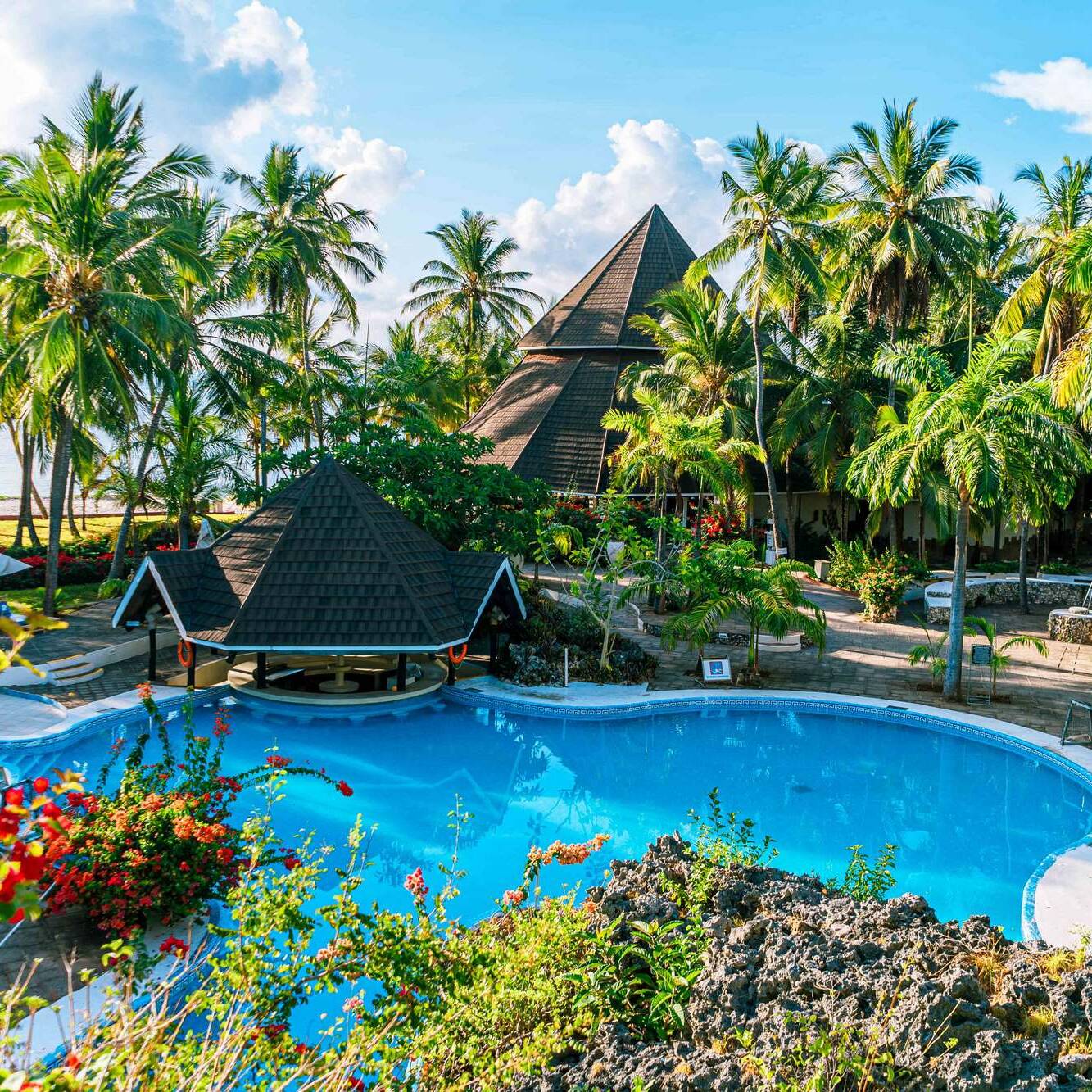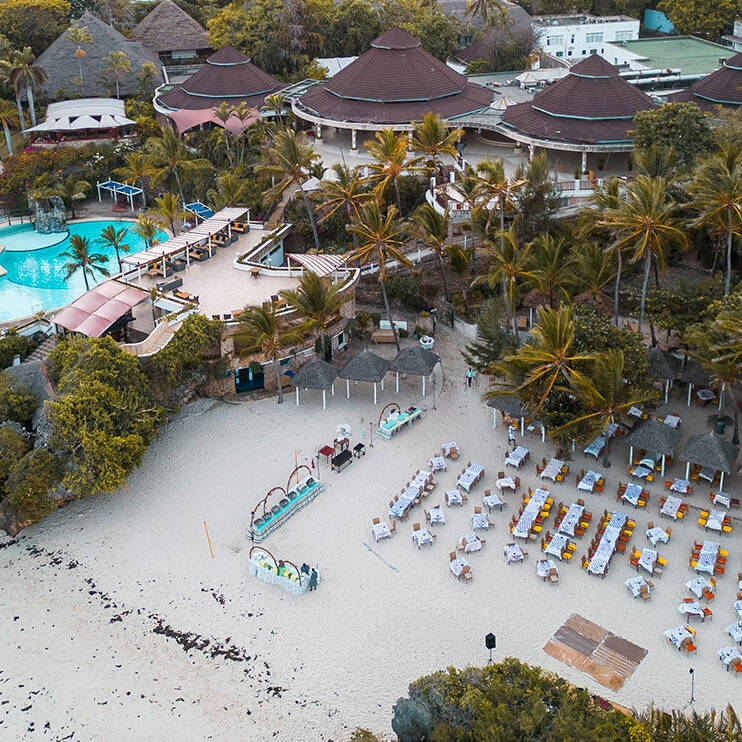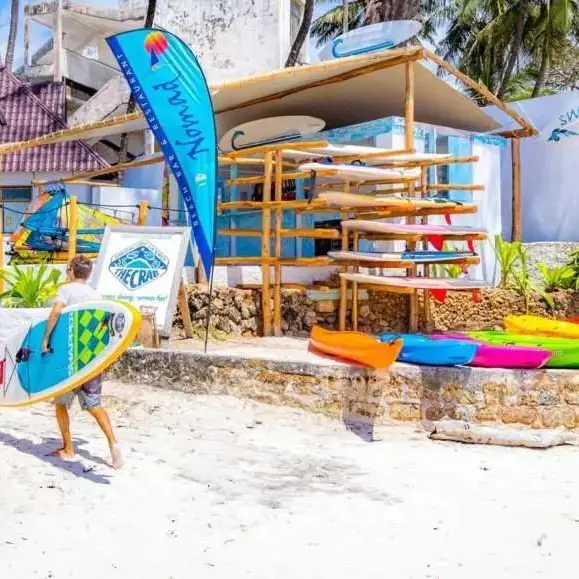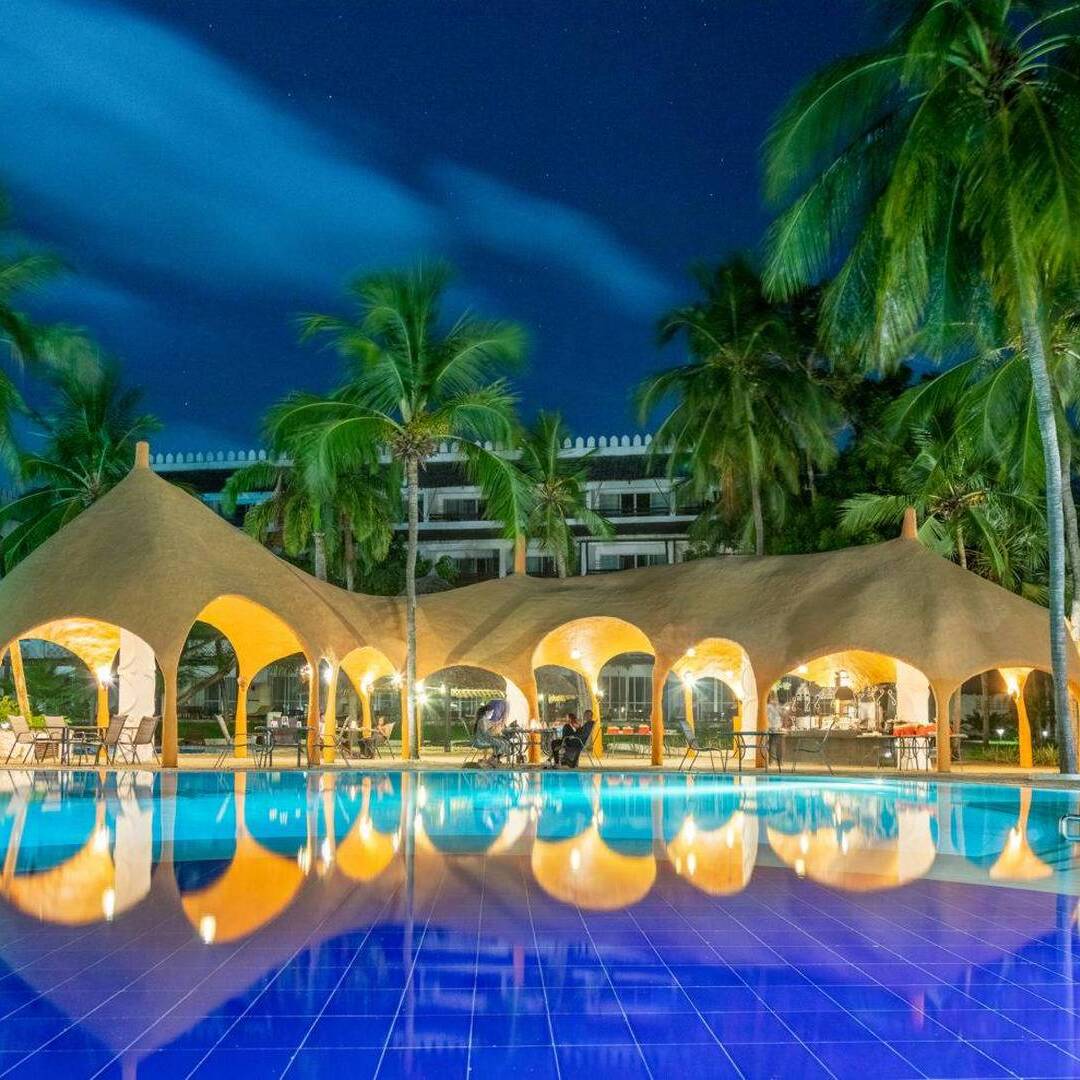Diani Beach extends roughly 17 kilometers along Kenya’s southern coastline, just south of Ukunda in Kwale County. The area is distinguished by its expansive, white coral sands and lush coastal forest. Here you will certainly see kitesurfers and water sports enthusiasts capitalizing on the reliable coastal winds and clear waters, while the nearby reef serves as a draw for divers interested in vibrant coral ecosystems and diverse marine life, including parrotfish and hawksbill turtles.
Beyond the shoreline, Diani offers opportunities for cultural and ecological engagement. Afternoons are generally tailored for corporate retreats, including visits to the Colobus Conservation center for educational excursions or exploring Diani’s boutique retail outlets for networking and informal gatherings. Evenings provide an ideal setting for business socials or client entertainment—sundowner cocktails beneath casuarina trees, accompanied by the ambient sounds of the Indian Ocean—creating an environment that balances productivity with relaxation.
Water Sports
Diani Beach stands out as a sought-after destination for kitesurfing and windsurfing, thanks to its consistent coastal winds and welcoming, shallow waters. From early morning, certified instructors guide beginners through the basics in the calm shallows, while more advanced athletes demonstrate their skills further out beyond the reef. As temperatures rise, stand-up paddleboarders and kayakers take to the lagoon, navigating along the mangrove edges where birdlife and tranquil scenery create an ideal environment for relaxed exploration.
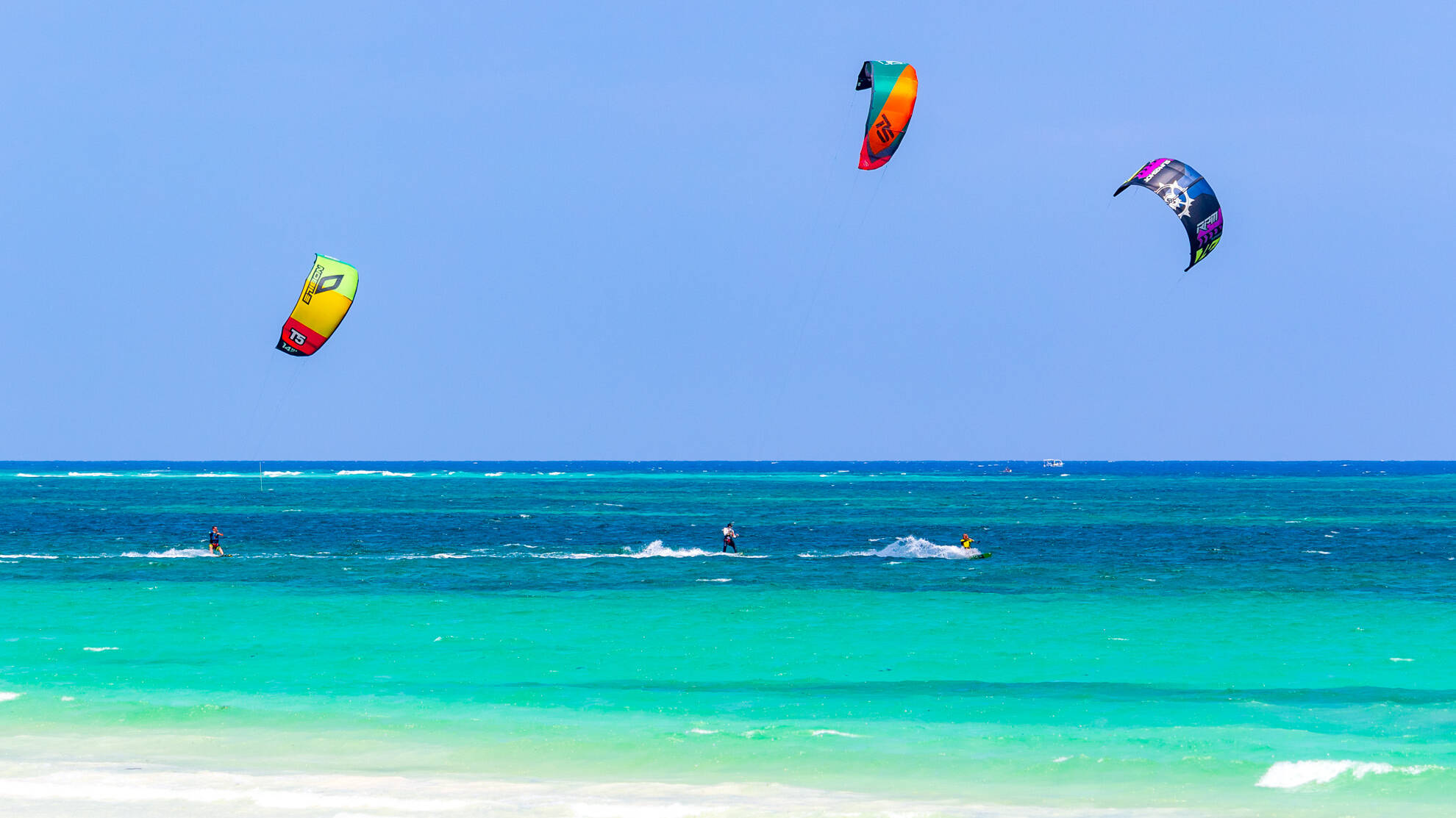
Underwater Exploration
Just a short swim from shore, Diani’s coral gardens support a vibrant marine ecosystem. Colorful angelfish, branching corals, and elusive moray eels create a dynamic underwater landscape. Professional snorkel guides organize half-day reef excursions, frequently pointing out hawksbill turtles and other notable species. For those seeking a more immersive experience, dive operators offer excursions to Gazi Bay’s historic wrecks and the drop-offs at Two-Mile Reef, catering to both novice and experienced divers
Marine Wildlife Encounters
In the late afternoon, traditional dhow cruises offer guests the chance to spot spinner dolphins and, during the July to October migration, humpback whales. These trips are enhanced by knowledgeable guides who provide context and insight into the local marine environment. After dark, organized turtle-nesting patrols can be arranged, giving small groups a firsthand look at conservation efforts and, when timing aligns, the remarkable experience of witnessing turtle hatchlings begin their journey to the ocean.
Leisure & Wellness
For guests prioritizing wellness, beachfront yoga sessions offer a peaceful start to the day. During peak sunlight hours, visitors often take advantage of nearby golf courses and tennis courts at partner resorts, enjoying meticulously maintained facilities set against the backdrop of lush palms and expansive ocean views. These amenities contribute to a well-rounded, restorative experience for both leisure and business travelers alike.
Cultural & Conservation Visits
Beyond the seafront, the Colobus Conservation centre offers in-depth educational experiences about local wildlife, particularly the endangered Angolan colobus monkeys. Guided forest tours showcase ongoing rehabilitation work, while community-led village visits introduce guests to Kinondo’s cultural heritage, including traditional Swahili architecture and crafts. Interactive demonstrations of coconut tapping, mat weaving, and Swahili cooking provide unique, hands-on ways to engage with the region’s living traditions.
Diani’s coastal forest is home to the unique Digo green pigeon, found nowhere else in Kenya.
The Shimba Hills elephant herds often swim across the creek into Diani Beach in search of salt‑licking opportunities.
Ocean currents here deliver soft coral fragments that continuously renew the beach’s silica‑fine sands.
The area was a focal point of the Swahili trading states from the 12th to 15th centuries, with archaeological sites still visible among dune ridges.
A living sand–forest ecosystem exists at the forest’s edge, where inland‑drift sands amalgamate with coastal woodland to form a rare biome.
Plan your visit
Take the first step to plan your trip with us. Our team will take the rest.

